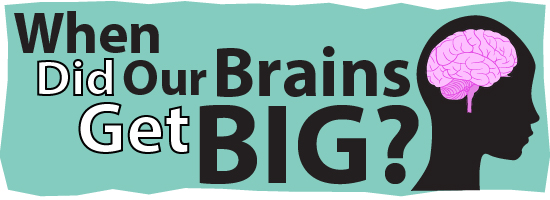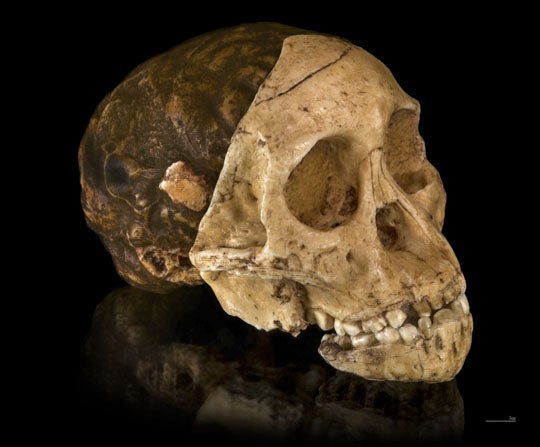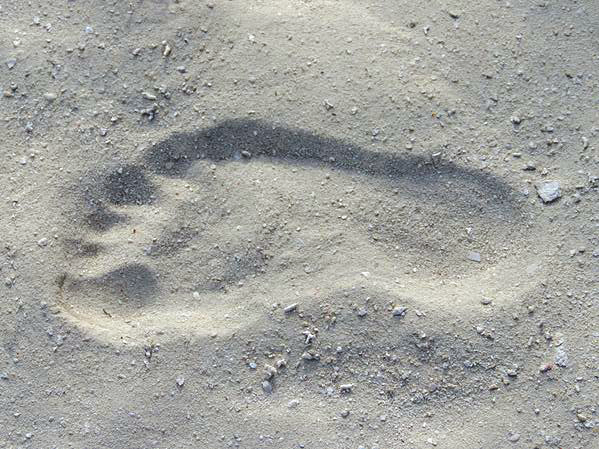
Australopithecus
The female Australopithecus jumps into a new tree, and the smell becomes stronger. There, on the ground, is a freshly killed, hoofed animal. She moves closer and checks around for the predator that made the kill. There is no predator in sight, so she slowly moves in and starts eating. With lots of calories packed into each bite, she can't pass up this important scavenged meal.
A scene like this probably took place for a member of the genus Australopithecus, a group of hominins that lived in South and East Africa from 4.2 to 2.0 million years ago. These hominins were bipedal and had large jaws and teeth, which they used to eat a variety of foods, including fruit, seeds, leaves, and underground storage organs (e.g., tubers). Their diets probably included some meat, although the meat was likely scavenged and not hunted. Because the development of larger brains is thought to be linked to eating meat, we can expect that these hominins had larger brains than Ardipithecus, but smaller brains than humans. This is indeed what we find.
Australopithecus brains were around 450 cubic centimeters (cc) in size or about the size of three-and-a-half tennis balls. Such brains are slightly larger than Ardipithecus and chimpanzee brains. But they are considerably smaller than the 1300 cc human brains, which are about the size of ten tennis balls.
 The first Australopithecus fossil was discovered in 1924 in South Africa and is known as the Taung child. Most of the individual’s skull was preserved. Surprisingly, the fossil also includes a cast of the internal structure of the braincase, known as an endocast. Endocasts are rare in the fossil record, but they can tell us a lot about brain structure. The cast showed us that their brains shared some similarities in organization with our brains.
The first Australopithecus fossil was discovered in 1924 in South Africa and is known as the Taung child. Most of the individual’s skull was preserved. Surprisingly, the fossil also includes a cast of the internal structure of the braincase, known as an endocast. Endocasts are rare in the fossil record, but they can tell us a lot about brain structure. The cast showed us that their brains shared some similarities in organization with our brains.
Australopithecus had slightly larger brains than chimpanzees with a more modern brain shape. We also have fossil evidence that this early human ancestor used simple stone tools. These stone tools were likely used to remove meat and bone marrow from scavenged animals.
Be Part of
Ask An Anthropologist
By volunteering, or simply sending us feedback on the site. Scientists, teachers, writers, illustrators, and translators are all important to the program. If you are interested in helping with the website we have a volunteers page to get the process started.

